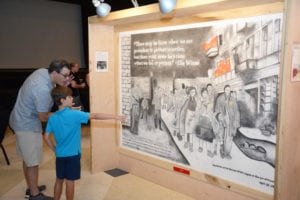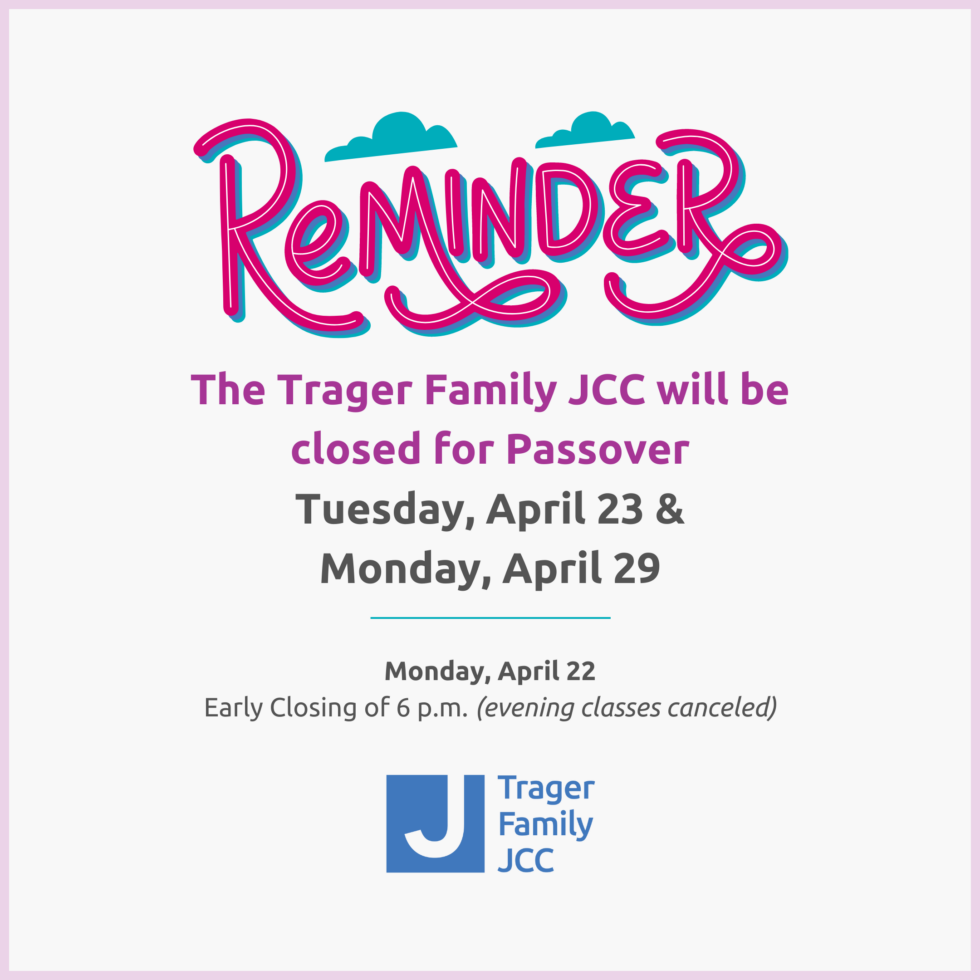I would like just to be silent, but being silent I lie.
— Jerzy Ficowski, Polish poet

Several parents brought their children to see the Never Again exhibit despite the stark themes of the murals. ( photo by William Beasley)
Xander Fauver wasn’t silent. Neither were the rest of his classmates, all gifted teens who took the Holocaust and Nazi Germany class this past summer at Western Kentucky University.
Several of those teens collaborated to create a 6-by-8-foot mural, done mostly in charcoal, and the latest in a series of 20 murals produced over as many years at WKU.
With liberation as its theme, the mural shows U.S. GIs liberating a concentration camp at the close of World War II (it’s based on a scene from the HBO miniseries, Band of Brothers). Quotes by General Dwight D. Eisenhower and Holocaust survivor Fred Gross complete the artwork.
But the liberation theme belies Fauver’s fear, and that of some of his classmates, that another Holocaust could happen.
“I think it’s possible,” said Fauver, a junior at Atherton High School, “given the resurgence of Nazism and how quickly things spread because of the Internet, how quickly ideologies can spread.”
The liberation mural is part of Never Again, the traveling exhibit of Holocaust-themed murals created by gifted students at WKU.
Installed late last week in The J auditorium, the life-size murals have been open to students from area schools as well as LBSY pupils. Sunday afternoon was the only public showing.
As part of the exhibit, The J screened a five-minute clip of a KET program about the murals, which is expected to air early next year.

Ron Skillern, the 2017 Kentucky Teacher of the Year who also teaches the VAMPY course on the Holocaust, describes the experience during a program Sunday, September 24. (photo by William Beasley)
The murals are on a three-city tour made possible by grants from the Jewish Heritage Fund for Excellence.
Produced by teenagers at WKU Summer Program for Verbally and Mathematically Precocious Youth (VAMPY), the pieces are grim, provocative and honest.
The themes of the murals go in many directions: Warsaw Ghetto, Anne Frank, Contemplating Injustice. Kristallnacht, Auschwitz, the Star of David, concentration camps and Ellie Wiesel.
One mural represents, not just the Holocaust, but slavery in America, cross-burnings by the Ku Klux Klan and internment of Japanese Americans during World War II.
Another replicated the scene from Schindler’s List showing a little girl in a pink sweater amid a black-and-white backdrop.
Many murals contained recreations of historical photos or film clips to convey their messages.
The collection was done overwhelmingly in charcoal with hints of color, though a few pieces are mostly paint. Fr example, one mural depicts the yellow Star of David with orange flames rising from the bottom of the canvas
Famous quotes from Wiesel, Albert Einstein, Edmund Burke, the Torah and Talmud populate the canvases, but only one quote appears on two murals, a line from Polish poet Jerzy Ficowski, which is given above. Ficowski wrote extensively about the Jews and the Holocaust.
Ron Skillern, the 2017 Kentucky Teacher of the Year who teaches the Holocaust class at VAMPY, frequently asks his students why they choose to take it. They tell him they were introduced to the topic in world history classes at their own high schools and became interested in it.
He said he sometimes gets Jewish students in the class, though they behave no differently to the subject matter than their non-Jewish classmates.
The Kentucky Center for the Arts, is a partner in the Never Again exhibit. Jeffrey Jamner, its senior director of education and community arts, and a son of Holocaust survivors said the exhibit has inspired him to bear witness to what his parents experienced.
Unlike his parents, he said, he cannot tell their stories from beginning to end, so conveys through vignettes, like the one about his then-9-year-old mother who pleaded with a Nazi guard at Auschwitz not to shear her hair.
Surprisingly, the guard let her keep it.
He said the story illuminated a moment of “resistance” on his mother’s part and one of “humanity” on the guard’s.




